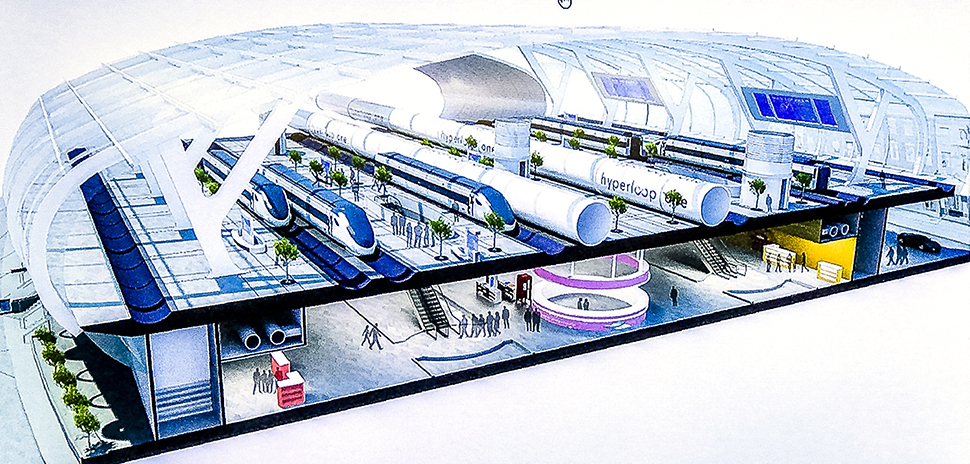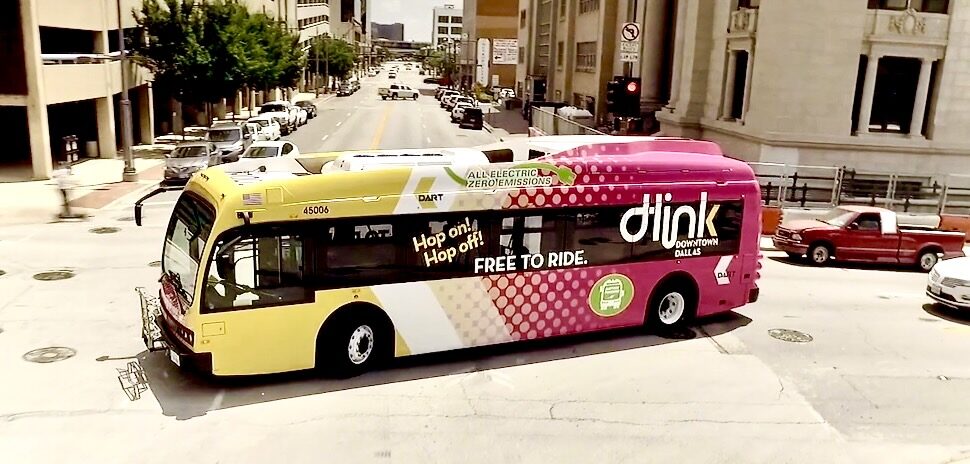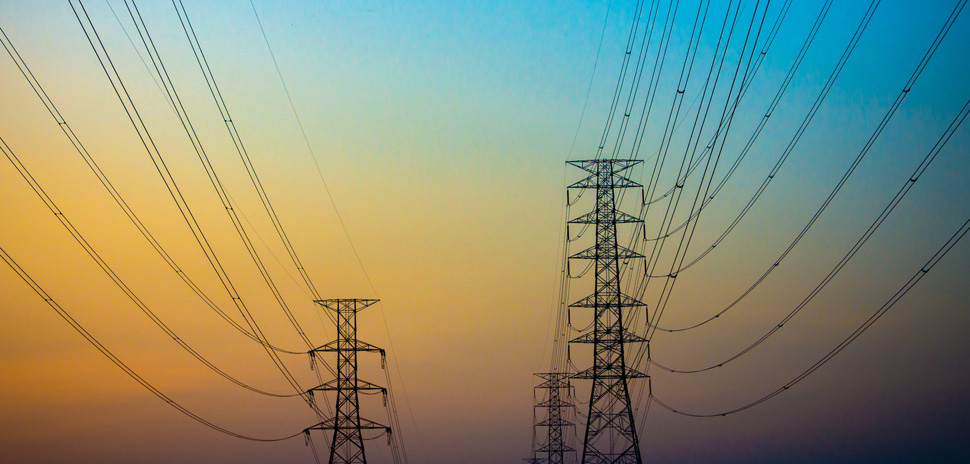![]() Want to turn that hours-long commute into mere minutes?
Want to turn that hours-long commute into mere minutes?
That’s the promise of a futuristic mode of travel sending passengers gliding at speeds up to 700 mph through a reduced pressure tube via magnetic levitation. Current estimates would cut travel time between Dallas and Austin to 19 minutes.
It’s an enticing option especially as you hit a standstill on *insert any major highway in Dallas-Fort Worth.* But, that mindless daydream may become a reality.
It’s still years away from commercial operation, but Thursday, Hyperloop One announced a Texas route as one of 10 it will further explore for possible implementation.
The California-based company hopes to begin operation of three full-scale hyperloop systems by 2021.
The Texas route would span 640 miles connecting Dallas-Fort Worth, Austin, Houston, San Antonio, and Laredo. As a transport system for both passengers and freight, it could change the way we think about transporting goods and plan our cities in the future said Steven Duong, a senior urban designer in AECOM’s Dallas office.
Duong led the statewide team at the engineering firm that developed the winning plan for how the new form of high-speed transportation could look in Texas.
He took time Friday to talk with Dallas Innovates about winning the Hyperloop One Global Challenge and the next steps in making it a reality.
The Texas route has been named one of 10 feasible options for Hyperloop One, what are the next steps in the process to making this a reality?
Being one of the winners selected in the competition means that we essentially have a green light to proceed and move forward with working with our partners, Hyperloop One, and our experts internally in figuring out what is the most appropriate and viable next step for us to take to bring this system to Texas.
That next step depends greatly on which region you are looking at. So, there are 10 winners around the world and for everyone the next step is going to be a little bit different. It really is based on how much progress and what has already occurred in each of those areas.
For us, it means to continue working with our partners and working with Hyperloop One to identify what our short-term goals should be, and what are the appropriate steps to begin making significant movement on this.
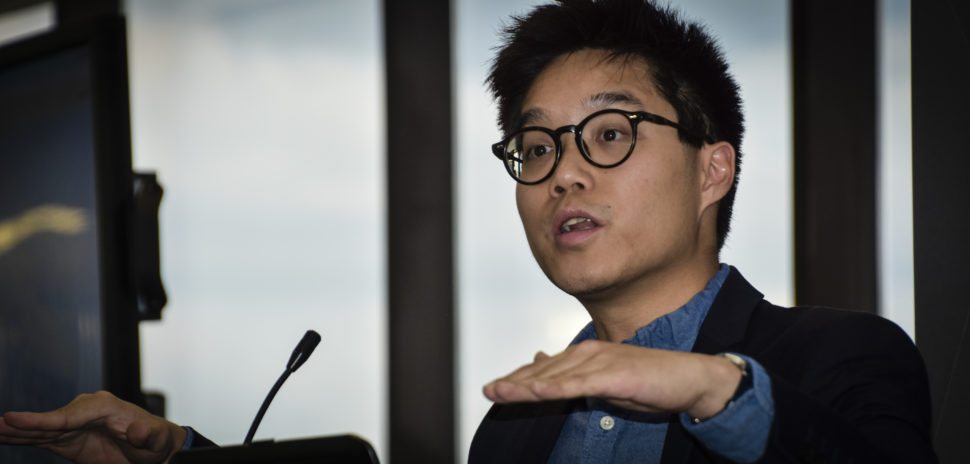
Steven Duong talks about Hyperloop One. [Photo: Dallas Innovates]
Any ideas on what steps you would take going forward?
With a new technology like hyperloop that hasn’t existed anywhere in the world, there aren’t really “go-bys.” So, a lot of the regulatory framework that you would need to execute a project like this, doesn’t currently exist.
I think in conjunction to finding out how to best execute and move into a feasibility stage, there’s also the larger picture on the federal side. We have to get a better grasp on how we would work with the federal government on a project like this.
Since it’s a new technology that hasn’t been done anywhere in the world, there aren’t regulations that govern the safety, the operation, the performance, and things like that for something like this.
What makes Texas and Dallas-Fort Worth, specifically, viable for a hyperloop system?
We have an extremely pro-business environment here. Hyperloop One is an American-founded technology company, so we have the political and economic climate to make it work.
We have a lot of really strong economic and land assets that would make it viable both on the passenger and freight side.
Dallas, in particular, [is] growing really quickly. We have a lot of really strong economic and land assets that would make it viable both on the passenger and freight side. DFW Airport is one of the busiest airports in the world. We have a lot of large logistic hubs around the region. In addition to the really strong population growth, that just all adds up to a viable market for something like hyperloop.
The state is generally pretty flat, so construction is a lot easier than it is in other places around the country and the world. All the cities in Texas are growing very rapidly, and they all have congestion issues. The distance between the Texas cities themselves is very appropriate for technology like this because they fall in the sweet spot between automobile travel and airline travel in terms of convenience and price.
How does Dallas-Fort Worth fit into the route?
They way we envisioned Hyperloop Texas is to be more of a system opposed to a traditional route. So, we don’t have a traditional “here are your two endpoints, and this is your time in between.”
We certainly think [Dallas is] going to be one of the major key nodes in the whole system, as are all the Texas metros.
Ours is unique in that we have multiple cities involved, and they are connected.
We certainly think [Dallas is] going to be one of the major key nodes in the whole system, as are all the Texas metros. Dallas is intended to have a station and be an endpoint, but it’s not understood in the same way most people would say it’s a beginning or an end. We certainly think [Dallas is] going to be one of the major key nodes in the whole system, as are all the Texas metros.
What implications would this kind of technology have on transportation? The economy?
The way Hyperloop One envisions this happening is the cost of a potential hyperloop ticket would be comparable to a bus ticket. And, certainly very competitive to all the other modes of transport we already have available to us. What that means is that for a relatively affordable price, you could be zipping in between all the major Texas metros through hyper loop much faster than it would take you to move from downtown Austin to Round Rock or downtown Dallas up to McKinney [by car].
What that means is that for a relatively affordable price, you could be zipping in between all the major Texas metros through hyperloop much faster than it would take you to move from downtown Austin to Round Rock or downtown Dallas up to McKinney [by car].
For a relatively affordable price, you could be zipping in between all the major Texas metros…
It really asks cities to rethink about how we are currently developing. Traditional development in cities is heavily revolved around automobile travel in Texas. When you have an option like hyperloop, it really makes the other urban cores accessible to individuals the same way that the suburbs are.
When you have an option like hyperloop, it really makes the other urban cores accessible to individuals the same way that the suburbs are.
Texas also leads the country in what we call supercommuters, which are people who travel between the cities frequently for work. Hyperloop, we imagine, would induce an even greater market demand for supercommuters.
What do you mean by saying hyperloop would contribute to the megaregion?
You could move freight from the inland port of Laredo, Texas up to the port authority of Houston and DFW Airport in a near-seamless fashion because of hyperloop.
If you could truly connect all the major Texas metros in a seamless way by using something like hyperloop, you would allow those cities to play on each others’ strengths in an even greater manner than they currently do. You would gain a lot of benefits to each of the cities that weren’t previously available before.
For instance, the idea that you could move freight from the inland port of Laredo, Texas up to the port authority of Houston and DFW Airport in a near-seamless fashion because of hyperloop. Whereas currently right now, if you were to move those products by truck it would be a full day’s drive as opposed to an hour or so.
Hyperloop would be for not only passengers but freight as well. What kind of player would this system be in freight transport? How would passengers/freight be moved in the same tube?
The beauty of something like hyperloop is it is intended to be operable equally between passengers and freight. So, you can use the same technology, tube, and infrastructure to support both freight purposes and passenger purposes.
You would really allow Dallas and some of the other Texas cities … to start envisioning same-hour deliveries across the state.
The speed at which hyperloop moves, the time and frequency between each pod, (Hyperloop One is aiming for something around one minute) essentially means that hyperloop is meant to be fully autonomous and on demand.
The implications for something like freight in this is that you would really allow Dallas and some of the other Texas cities … to start envisioning same-hour deliveries across the state.
Then, Monterrey, Mexico to Texas would be able to link up together to play off each others’ industrial strengths. You could imagine moving a lot of industrial and other products from Latin America to Mexico into Texas very quickly to be distributed through the airports or seaports that we have here in Texas.
The system is designed to interplay seamlessly with passengers. So, you could have a pod that has freight moving through the tube and then following closely behind it, a pod with passengers going to a different destination.
What are the size limitations for freight in hyperloop?
There are plenty of concepts and designs out there that include having a pod that can perfectly fit the size of a shipping container.
Part of the benefits of this system could be moving a vast majority of the semi-trailers that run along I-35 between the cities into a hyperloop system to alleviate congestion on our roadways while also separating that freight travel from the roads.
There are naysayers out there that say this transportation is mere “pie-in-the-sky.” From a feasibility standpoint, what would you say to them?
I would tell them that it’s certainly not “pie-in-the-sky.” You can easily point to the working hyperloop system in the deserts of Nevada to say that it’s not a “pie-in-the-sky.” It’s very real and very buildable.
The important thing to note is that hyperloop technology itself isn’t inherently new. It’s actually putting the pieces together from a lot of other technologies into a new system. So, the propulsion system, the maglev system, and all those other parts that make the hyperloop work have a existed before in other technologies. All you are doing is combining them in a new way.
We’re excited that it shows the world that Texas is open for innovation and that we can be on the leading edge of transportation infrastructure.
You’ve seen it work because both SpaceX with Elon [Musk’s] recent test track in California and Hyperloop One’s own test track in Nevada, show that this technology is working and very real.
Anything else you want to add?
We’re really excited to work with our partners to understand and find how to bring a hyperloop to Texas. We’re excited that it shows the world that Texas is open for innovation and that we can be on the leading edge of transportation infrastructure.
AECOM can help deliver this, not only in Texas, but possibly all over the world as we are currently involved with half of the winning proposals around the world.
PHOTO GALLERY
Steven Duong talked about Hyperloop One at the Dallas Regional Chamber earlier this month. Here are takeaways from the presentation.
![Steven Duong talks about Hyperloop One at the Dallas Regional Chamber. [Photo: Dallas Innovates]](https://s24806.pcdn.co/wp-content/uploads/2017/09/2Hyperloop_DRCtaskforce_Hyperloop_970DSC_7874101.jpg)
Steven Duong talks about Hyperloop One at the Dallas Regional Chamber. [Photo: Dallas Innovates]
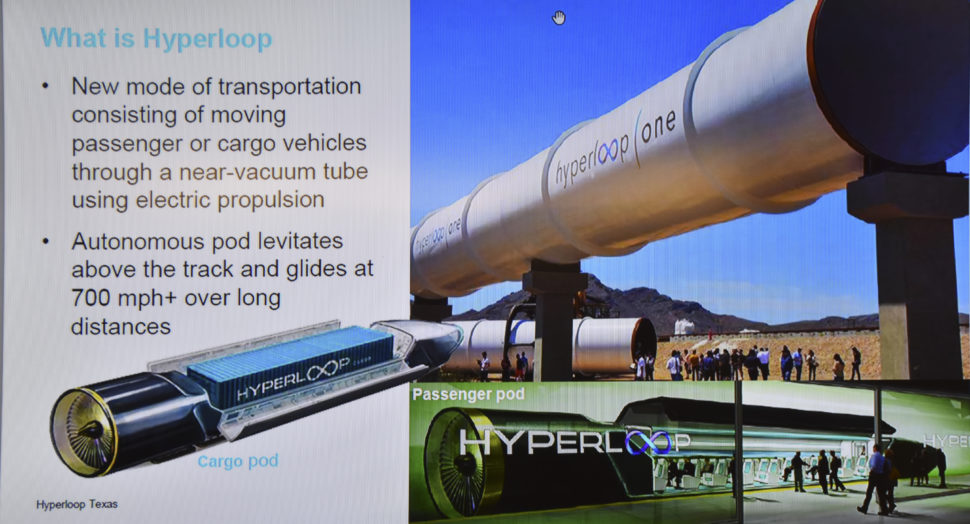
An autonomous pod levitates above the track and glides at 700+ mph over long distances as proposed, explains Steven Duong.
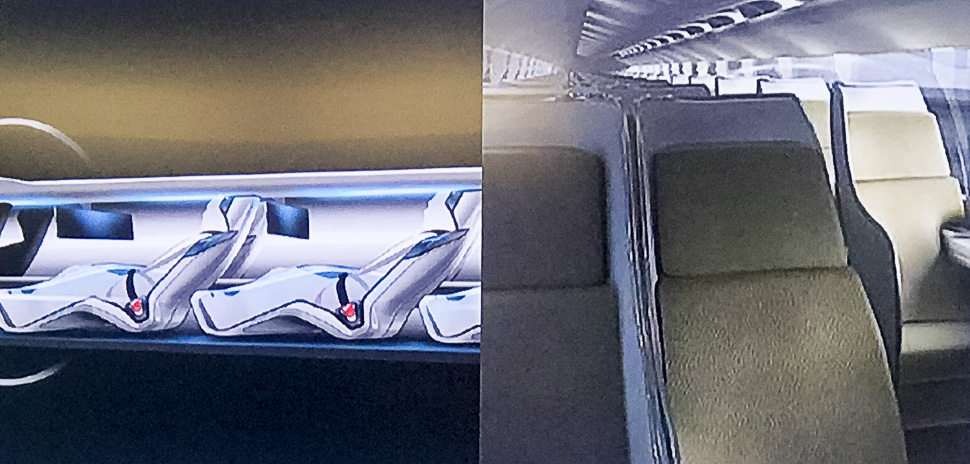
Rendering showing seating in a Hyperloop project.
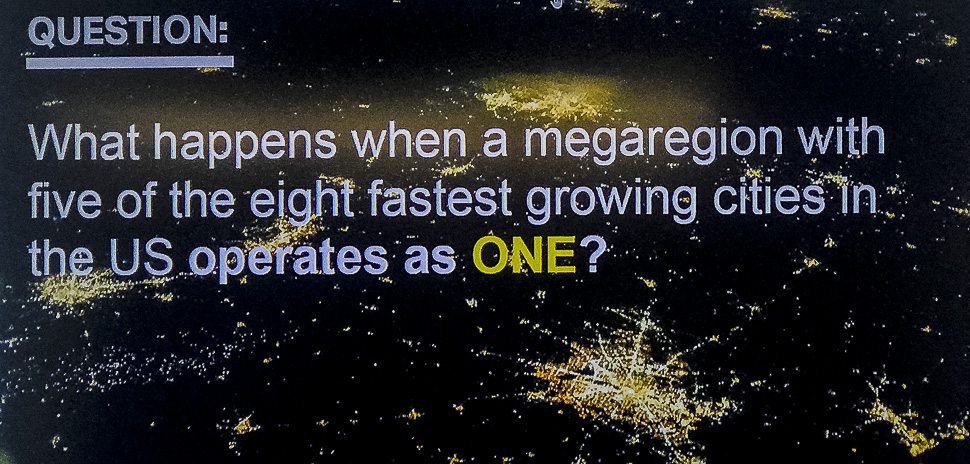
AECOM’s Steven Duong asks — and answers: What happens when a megaregion with five of the eight fastest-growing cities in the U.S. operates as ONE?
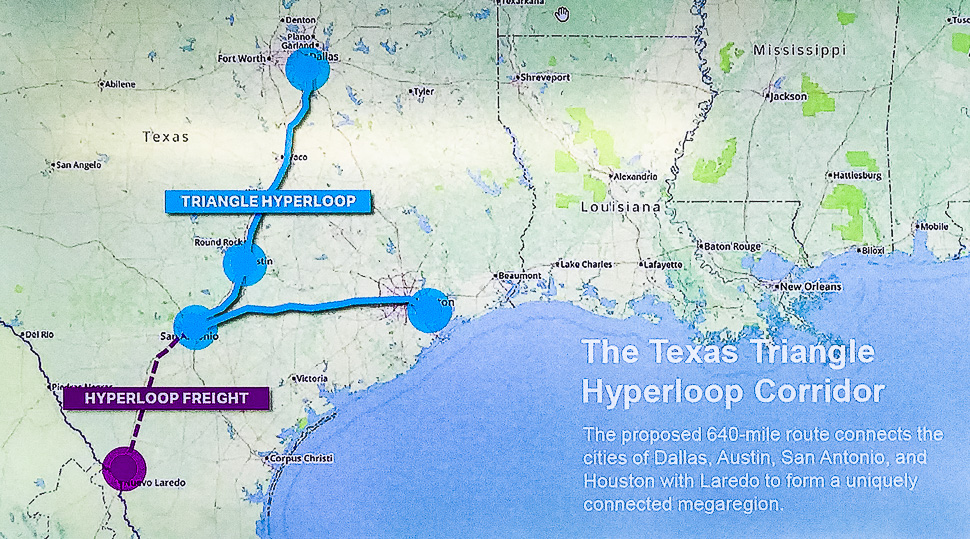
The Texas Triangle Hyperloop Corridor: The proposed 640-mile route connects the cities of Dallas, Austin, San Antonio, and Houston with Laredo to form a uniquely connected megaregion, said Steven Duong.
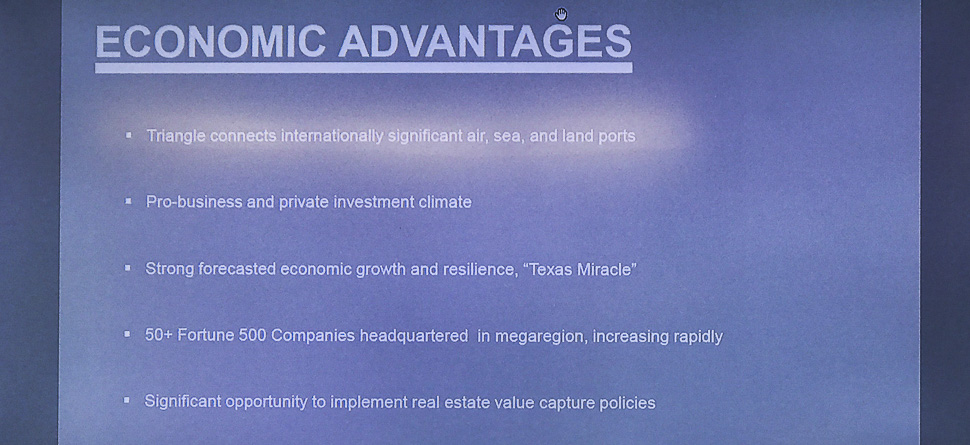
Steven Duong talked about the economic advantages of the “Texas Triangle” that could connect internationally significant air, sea, and inland ports.
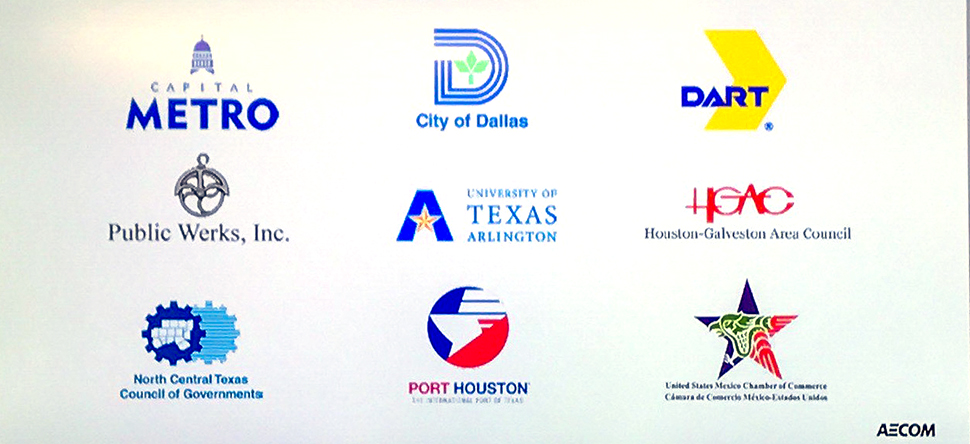
Some of the partners and supporters of the project as presented in early Sept.
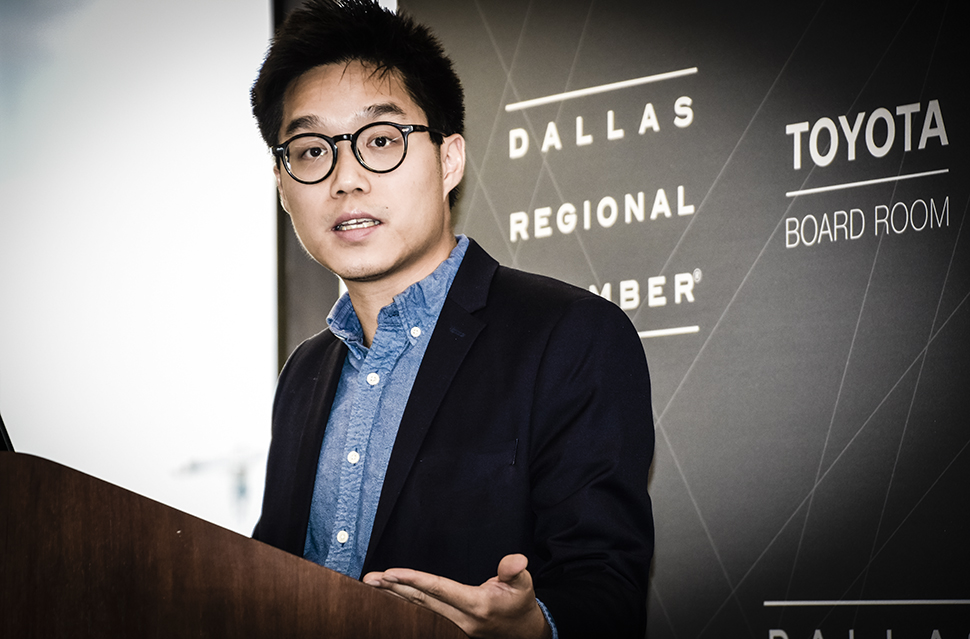
Steven Duong
[Photos: Dallas Innovates. Sceenshots from Steven Duong’s presentation at the Dallas Regional Chamber earlier this month.]
Want more stories like this one?
Dallas Innovates Every Day. Sign up to get our news.

